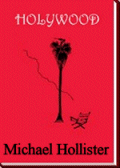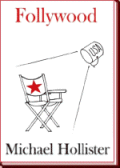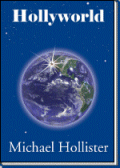Novelist & Critic
HOME PAGE
BIOGRAPHY
MODEL OF METAPHORS
DANEgerus
Patrick Garry, novelist
Key Largo
Huston had a new passion too. He talked with expansive gestures about his next picture Key Largo, a play he was adapting to the screen, again with Bogart and Bacall. They were leaving soon to shoot in Florida. That was a wonderful thing about making movies, they all agreed, you were constantly renewing yourself, moving on to another project, another life almost. Bogart seemed especially anxious to move on. Huston squinted at him and declared, "Just when you get to know an actor in one role, he becomes someone else!" Bogart squirmed. Actually, Huston was not ready to move on. He wanted revenge. He paced around, ranting like Captain Ahab. He was twisting his adaptation into an attack on the House Committee, turning his next picture into a wish fulfillment reversal of history starring Bogart as a liberal and war hero who does not back down, who defeats the forces of the right wing, represented as gangsters led by the squinting heavy-jowled icon of evil Edward G. Robinson.
Eisley stretched his brain to accommodate Huston, trying to imagine virtually the entire U.S. House of Representatives, both parties, as rightwing gangsters for voting by landslides to send the Ten to prison for contempt of Congress, and trying to see the Communists as innocent liberal war heroes. Drinking stimulated cartoon thinking. Huston also intended to defy the Blacklist by casting as one of the gangsters the Communist Marc Lawrence. After they saw the picture, the Eisleys thought his allegory was so confusing and imperceptible, except in a few scenes, that it would never be recognized as Communist propaganda. John talked louder and wilder the more he drank and referred to the FBI with defiant contempt, as if the room might be bugged.
Follywood, pages 177-78
The Best Years of Our Lives
The Big Chill
Billy Budd
The Bostonians
Casablanca
Citizen Kane
Close Encounters of the Third Kind
Coming Home
Daisy Miller
The Day of the Locust
Dr. Strangelove
Easy Rider
Fail-Safe
A Farewell to Arms
The Front
Gone with the Wind
Good Night, and Good Luck
The Graduate
The Grapes of Wrath
The Great Gatsby
Guilty by Suspicion
High Noon
Huckleberry Finn
Invasion of the Body Snatchers
Key Largo
The Majestic
Meet John Doe
Moby-Dick
The Old Man and the Sea
On the Waterfront
The Player
The Red Badge of Courage
Reds
The Scarlet Letter
The Shrike, based on Miss Lonelyhearts
2001: A Space Odyssey
The Sun Also Rises
Triumph of the Will
The Way We Were
Wise Blood
The Wizard of Oz
Woodstock
The World According to Garp
The
HOLLYWOOD
Trilogy
Three historical novels dramatize Hollywood's global influence from the 1930s to the present age of terrorism, through the life stories of Sarah McCloud, a farm girl from Oregon, and Ryan Eisley, the son of a beer distributor from Ohio.



Click Book to Order